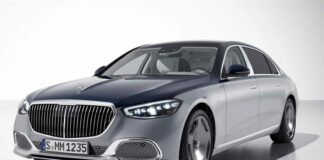Some concept cars become road-ready realities, leaving a lasting impact beyond just another model launch. The Audi Le Mans Quattro evolved into the 2008 Audi R8 Coupe, the Land Rover LRX morphed into the 2012 Range Rover Evoque, and the Hyundai Concept 45 became the 2022 Ionic 5. But many others shine brightly at auto shows, then disappear… or, at least, most of them do. Some concept cars had the potential to truly disrupt the automotive landscape if they’d ever made it to production. Here’s a look at those forgotten pioneers.
Toyota AXV-IV (1991): The Lightweight Revolution That Wasn’t
Toyota experimented with radical designs in the 1990s, and the AXV-IV was a testament to lightweight construction, aerodynamics, and fuel efficiency. This front-engine, rear-wheel drive coupe tipped the scales at just 992 pounds thanks to an aluminum, magnesium, and carbon fiber body. Even the springs were fiberglass-reinforced plastic. The engine, an 804cc two-stroke with direct injection, produced 63 horsepower through a five-speed manual.
Why it mattered: Had Toyota pursued this extreme lightweight philosophy, we might have seen a micro-sports car movement akin to Lotus. But manufacturing costs and safety regulations would have made a production version too expensive and impractical. Carbon fiber is now used in high-end cars, but it remains a premium material.
BMW E1 (1991): An Electric Vehicle Ahead of Its Time
The BMW E1, unveiled in 1991, was a fully functional EV with dual front airbags and crash safety features – decades before electric cars were mainstream. Its aluminum frame and plastic panels kept it light, while a rear-axle motor and sodium-sulphur battery provided a respectable 75 mph top speed and 125-mile range. Charging took six hours via a standard electrical plug integrated into the kidney grille.
Why it mattered: BMW positioned the E1 as an urban mobility solution, and it could have kick-started the EV industry 15 years before Tesla. The prototype caught fire due to battery chemistry issues, but later versions used a more stable sodium-nickel chloride battery.
BMW Nazca M12 (1991): The Carbon Fiber Supercar That Never Was
BMW doubled down in 1991 with the Nazca M12, a low-slung supercar with a carbon fiber body weighing just 2,425 pounds. The mid-engine housed a 5.0-liter V12 from the 850i Coupe, delivering 300 horsepower and a 184 mph top speed.
Why it mattered: Had BMW produced the Nazca, it could have entered the supercar arena directly against Ferrari and Lamborghini. Strict emissions regulations and the cost of carbon fiber production made it unfeasible at the time.
Chrysler Atlantic (1995): Retro Beauty with a V10 Twist
Chrysler’s wild side shone through in the 1995 Atlantic concept – a stunning Art Deco homage to the Bugatti Atlantic of the 1930s. Its flowing curves and chrome accents hid a questionable engineering reality. The engine was a cobbled-together V8, but the chassis could have accommodated a Viper 8.0-liter V10.
Why it mattered: The Atlantic could have been a snarling V10 reality had Chrysler pushed it. The Prowler and P.T. Cruiser proved they could bring unconventional designs to market, but the Atlantic remained a beautiful, unrealized vision.
Ford GT90 (1997): America’s Space-Age Supercar
Ford’s GT90 concept, unveiled in 1995, was hailed as the successor to the GT40. Its quad-turbo V12 produced 720 horsepower and a claimed 253 mph top speed. The engine was built by combining two Lincoln V8s, and the body incorporated carbon fiber and honeycomb aluminum.
Why it mattered: If Ford had produced the GT90, it could have challenged European supercars head-on. However, corporate priorities and Jaguar ownership (another failed opportunity) prevented its realization.
Mercedes-Benz F200 Imagination (1996): Predicting the Future
The Mercedes F200 Imagination lived up to its name, showcasing drive-by-wire controls, active suspension, camera-based mirrors, early infotainment systems, and keyless entry. Butterfly doors and a futuristic design completed the package.
Why it mattered: Many of the F200’s innovations made their way into production cars. The joystick controls never caught on, but the rest became industry standards.
Volkswagen Syncro W12 (1997): VW’s Supercar Ambition
Volkswagen’s Syncro W12 concept was a four-wheel-drive mid-engine supercar that set speed records. The 6.0-liter W12 engine, created by combining two VR6 engines, produced immense power.
Why it mattered: The W12 engine lived on in Audi, Bentley, and even Bugatti vehicles. If VW had produced the Syncro, it would have been a standout supercar, but the brand’s identity remained rooted in mass-market cars.
Pontiac Rageous (1997): A Confused Muscle Car
The Pontiac Rageous was a bizarre blend of muscle car performance and family-friendly practicality. A 315-horsepower V8, a five-speed manual, and a massive hatchback created a confusing package.
Why it mattered: The Rageous was too expensive for a family car and too complicated for a muscle car. It would have been a commercial failure, but a cult classic today.
Cadillac Sixteen (2003): The Ultimate Statement
Cadillac’s Sixteen concept was a retro-inspired behemoth with a 13.6-liter V16 making 1,000 horsepower. The luxurious interior and outrageous size signaled Cadillac’s ambition to reclaim its dominance.
Why it mattered: The Sixteen wasn’t meant for mass production; it was a flexing of power. Its design language influenced later Escalade models, reinforcing Cadillac’s luxury image.
Jaguar C-X75 (2010): The Right Car at the Wrong Time
Jaguar’s C-X75 concept was a radical hybrid supercar with four electric motors and two diesel micro-gas turbines. Production briefly began before the project was canceled due to the economic climate.
Why it mattered: The C-X75’s innovative hybrid powertrain could have challenged early Tesla models and accelerated performance hybrid development. The timing, however, was wrong, and the project was abandoned.
These concept cars represent missed opportunities, technological leaps ahead of their time, or simply bold statements that never translated into reality. But they remind us that innovation doesn’t always lead to production — sometimes, the most exciting ideas remain just that: ideas.























